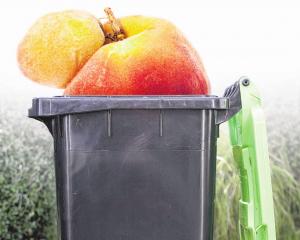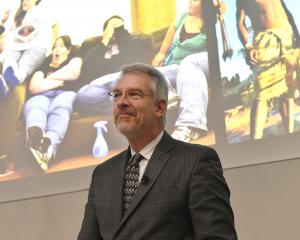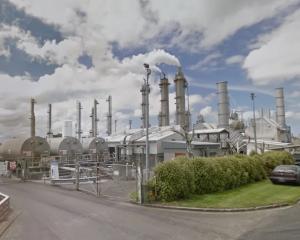New Zealand could park a significant chunk of its carbon emissions by focusing on transport, but it's a journey that's only just beginning Tom McKinlay reports.
In a recent letter to shareholders, oil giant Shell provided assurances it was not about to be caught with an inventory of unburnable fossil fuel reserves.
Despite the threat of climate change, the company said global population growth and increasing energy demands meant its markets were safe from an exodus to greener technology, at least for several decades to come.
It could be Shell is right.
And yet, over at New Zealand transport firm AOne Movers Ltd, they've run a trial using biodiesel that has been so successful they plan to convert their entire fleet to the fossil-free fuel.
At the Kapiti District Council, its ZEV Enviro 9000 electric waste management truck travels a daily route of 100km, then charges up at night.
Closer to home, the Dunedin City Council is paving the way for commuters to garage their cars and hop on the bike.
So Shell could be wrong.
Indeed, in a new book, Clean Disruption of Energy and Transportation, Stanford University lecturer Tony Seba says Silicon Valley will make oil, natural gas, coal and conventional cars obsolete by 2030.
Google, for one, is making steady progress with its fossil-free, driverless two-seater electric car. The picture is anything but clear, but two recent reports with strong connections to Dunedin argue we should hitch our wagons to new ways of getting around.
In a March report chaired by University of Otago Emeritus Prof Gerry Carrington, Facing the future: towards a green economy for New Zealand, the Royal Society of New Zealand identified that transport provides significant opportunities for reducing the country's carbon emissions and advancing a greener economy.
Then in May, researchers at the University of Otago's Centre for Sustainability released a report prepared for the Energy Efficiency and Conservation Authority (EECA) ''Transport Transitions in New Zealand: A Scoping Study''.
It found myriad efforts across business, government and by individuals to change the way they move from A to B, but that those efforts (it lists 85 case studies) were piecemeal, niche efforts, crying out for some co-ordination.
Why this is important is the huge quantities of energy the country uses for transport and the carbon emissions that result.
Road transport produces 45% of New Zealand's greenhouse gas (GHG) emissions from energy use, far more than the manufacturing and energy industries and dwarfing the contribution from the likes of housing.
Within the transport sector, road transport accounts for more than 90% of emissions. New Zealand has more vehicles per capita than most other countries, and energy use per capita for road transport is 20% above the OECD average.
In a comparison with a group of 18 countries, in 2008, the share of passenger transport carried by cars, the percentage of freight carried by trucks, and the energy used to shift freight transport were all high.
As the country shrugs off the global financial crisis (GFC), light vehicle registrations have spiked, while at the same time the fleet has grown as people hang on to older cars longer.
Latest figures from the Ministry of Transport show 77% of road travel is by light passenger vehicles. Further, modelling by the Ministry for the Environment indicates the country is nothing like tracking to meet its modest GHG reduction targets.
Indeed, by 2040 net GHG emissions are expected to be 51% higher than the 1990 baseline. Under current policy settings, GHG emissions from the energy and transport sectors alone will exceed the 2050 target by 2030.
The Government has a target of a 5% reduction in emissions below New Zealand's 1990 greenhouse gas emission levels by 2020 and a target of 50% reduction in emissions by 2050.
Associate Climate Change Minister Simon Bridges has addressed the issue in speeches several times this year.
In May, in a speech in which he declared we need to reduce our carbon emissions and respond to climate change, Mr Bridges said ''transport is clearly an area where we can improve fuel efficiency, make savings, reduce carbon dioxide emissions and improve New Zealand's drive to increased use of renewables''.
Indeed, transport was among the areas that offered ''the greatest opportunities to reduce carbon emissions'', he told another audience the same month.
He pointed to several initiatives. One involves EECA working with road transport associations to implement fuel savings plans, a programme expected to save up to a million litres in diesel each year and about 7500 tonnes of carbon dioxide each year.
''This is equivalent to the annual amount of carbon stored in a 400ha New Zealand pine forest,'' Mr Bridges said.
In a second initiative, EECA is to run a campaign to increase the uptake of fuel-efficient tyres.
''Passenger cars are responsible for about 10% of New Zealand's greenhouse gas emissions and increased uptake of fuel-efficient tyres presents an opportunity to reduce emissions at a national level,'' Mr Bridges said.
Doubling sales of fuel-efficient tyres could save 2.5 million litres of fuel each year and about 6000 tonnes of carbon, the equivalent of taking 1900 cars off the road.
Mr Bridges conceded these ''are modest but potentially important initiatives''.
''On the other hand,'' he said, ''EVs [electric vehicles] present an opportunity for a serious leap forward''.
''Replacing a comparable petrol car with an electric vehicle would reduce carbon dioxide emissions by over two tonnes a year.''
The same day he said that, his colleague Environment Minister Amy Adams was in Whangarei opening the country's first EV rapid charger.
Despite such initiatives, the Government has no particular target for emissions reductions from transport, indeed it is spending big on roads.
The emissions trading scheme (ETS) carries the weight of responsibility for reducing the country's emissions from transport, though there are a handful of other measures.
For example, bioethanol is exempt from excise tax, electric vehicles are exempt from road user charges, and last year the Ministry for Primary Industries (MPI) approved co-funding of $6.75 million for a 14-month ''Stump to Pump'' programme, studying the feasibility of making bio-fuel from forestry waste.
They are worthy efforts but small in scale. There were only 108 electric vehicles on New Zealand's roads when the Ministry of Transport last counted, last year. That was up from 75 the previous year, a significant jump, but given there were 34 a decade earlier, the rise of the EV has been pedestrian.
There is little incentive for motorists to switch to electricity, given the price of EVs. Liquid fuels - petrol, diesel - are included in the ETS, but the way the scheme is structured, the carbon price at the pump can be as low as half a cent per litre.
Dr Janet Stephenson, one of the authors of the ''Transport Transitions'' report and director of the University of Otago's Centre for Sustainability says more urgency is required.
''We are in a position where some fairly large transitions are going to occur whether we like it or not, and if we can step ahead and achieve change before we are forced to, it is probably a good idea.''
Between the prospect of further price rises for fossil fuels and climate change there is plenty of incentive, Dr Stephenson says, and there are ways and means.
''Technology or the existence of the internet and IT makes new ways of, not exactly travel, but travel avoidance. We tend to use the word `mobility' these days because mobility can mean being physically mobile or it can just mean projecting your image and your voice to the other side of the world without needing to travel.''
Overseas, IT is facilitating seamless public transport, in which travellers use their phone to track approaching buses, a phone or a swipe card can be used to pick up a bike for short-term use, or a card can be used to pick up a shared car, she says.
''All of these possibilities around transport that we could not have even dreamt about 10 years ago are suddenly becoming realistic.''
Dr Stephenson is also enthusiastic about the potential for EVs to cut emissions, and sees potential for converting the existing fleet to electricity.
''Imagine taking over the [Hillside Rd] railway workshops and having a Toyota Corolla retrofit. You have to think big and you have to think creatively, but that kind of thing for New Zealand would be a really innovative solution,'' she says, describing the suggestion as a ''thought experiment'' that nevertheless clearly holds some attraction for her.
Solutions will come in various forms, she says. Driving more efficiently can make a contribution, which includes both driving practice and car set-up; leaving the car in the garage when possible and using public transport or walking or biking; designing urban settlements so shops are near.
''But importantly, it means actually dealing with the car itself, given the nature of our country with a lot of rural areas and small settlements that are not well set up for public transport. There is always going to be a need for private vehicles. At the moment, electric vehicles look like a good bet,'' says Dr Stephenson.
Prof Carrington says what the country needs is a Transport Forum to investigate the best options. Something similar to the recent Land and Water Forum, the results of which were widely applauded.
''Those conversations lead to ideas changing,'' he says.
''It is no one individual has the good ideas. You have to pool them and also you have to get people talking to people that they don't normally talk to. People they don't agree with. You learn a lot from people you don't agree with.
''Those sorts of conversations don't happen naturally, they have to be put together and those are the sorts of things the Government can do.''
Prof Carrington concedes the task is not insignificant, given the central role of fossil fuels in the economy.
''We are so embedded in it structurally, that this is going to be enormously difficult to unpick. So beginning those conversations now rather than denying it is going to happen is really sensible. That's not a big political debate, that's not going to spook anybody.''
Maybe not even Shell.
A generation with a different view
Young people are not spending as much time in the driver's seat as they once did. Rather, they are moving away from the private motor car to other modes of travel and communication.
But precisely why and how widespread the phenomenon is remains something of an unknown.
To get to the bottom of the emerging trend, University of Otago researcher Debbie Hopkins is taking a closer look as part of the Centre for Sustainability Energy Cultures II project.
''There is this trend in which young people, so generation-Y, are less likely to get their licences; there is a lower proportion,'' Hopkins says.
''If you look at the percentage of the entire population within that generation, the percentage is decreasing of those with licences. And then if they do get their licences, they are less likely to own a car and they are travelling less in terms of kilometres travelled.
"There are a number of countries that are reporting this: Canada, the UK, USA, Sweden, Norway, South Korea, Japan, Australia. We have been starting to look into this a little bit more to see whether these trends are occurring in New Zealand.''
While early indications are that there is a flattening and a slight declining trend in terms of vehicle kilometres travelled (VKT), there is work to do to determine its extent and range.
The trend appears to have begun in the early 2000s. Among possible explanations are that the global financial crisis disproportionately affected younger people, that young people are staying home longer and spending longer in education, that increasing urbanisation is having an effect, and that increasing environmental concern is turning young people off fossil-fuelled transport.
Hopkins wants to talk to members of generation Y (aged 18-35) who have licences but have chosen not to drive or not own a vehicle, or chosen not to get a licence. She plans to do interviews in Auckland, Dunedin and rural areas from this month.
Interviewees need to have grown up in Dunedin or in a rural area.
''I imagine there will be a whole range of drivers and reasons behind that, but it is really interesting to find out what they are, but more importantly to find out if it is going to continue in the long term. Because obviously we need to start thinking around transport policy and planning if we are seeing these changing preferences.''
Four clusters of transport innovation
The Transport Transitions in New Zealand scoping study found four clusters of transport innovation.
1. Changing practice: An example is Alexander Petroleum Services, which introduced a driver best practice system to reduce high levels of fuel consumption in its tanker fleet.
2. Changes in material culture: An example is Courier Post, which has run a trial using 100% biodiesel in some of its Wellington vans, with good results.
3. Transition agents: An example is Green Fleet, which was developed by the Sustainable Business Network to help businesses with the costs and impacts of transport, including offsetting emissions by planting trees.
4. Modal shifts: An example is New Plymouth District Council's ''Let's Go'' package, which aims to encourage residents to choose to walk or cycle on shared pathways and streetscapes. Source: Transport Transitions in New Zealand, CSAFE.












